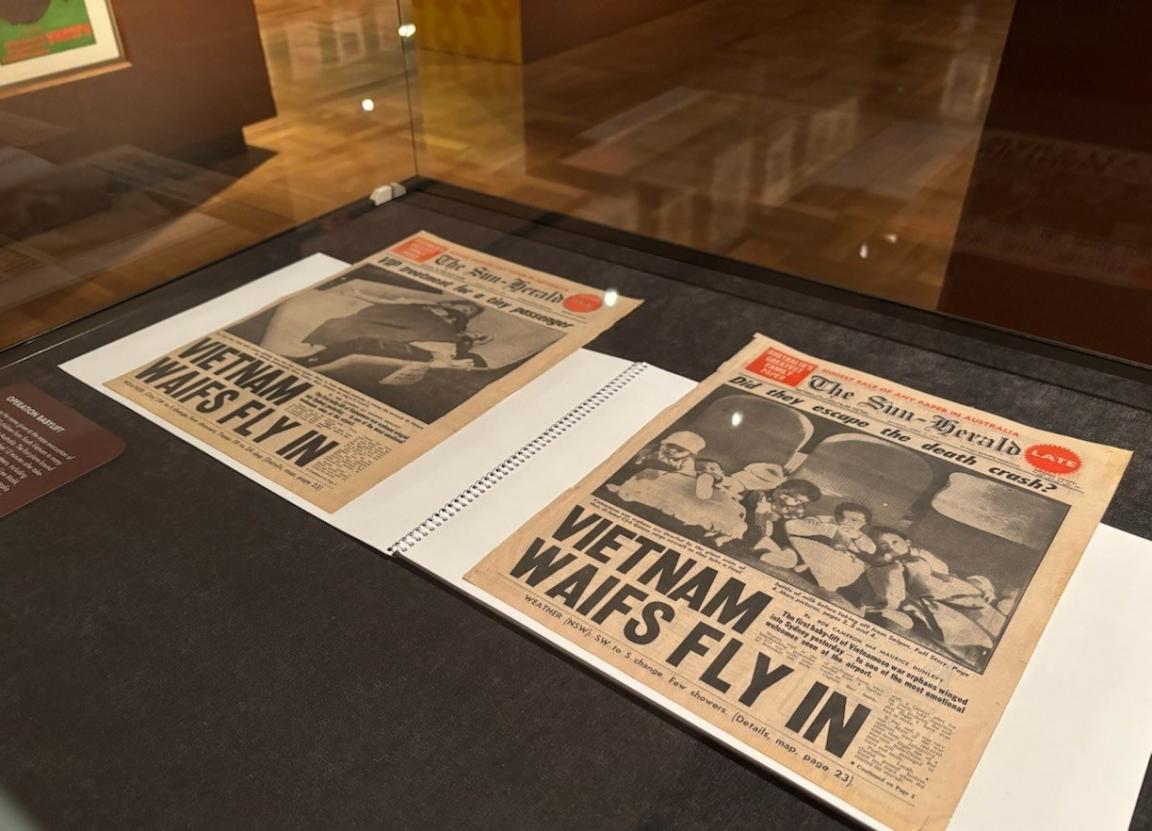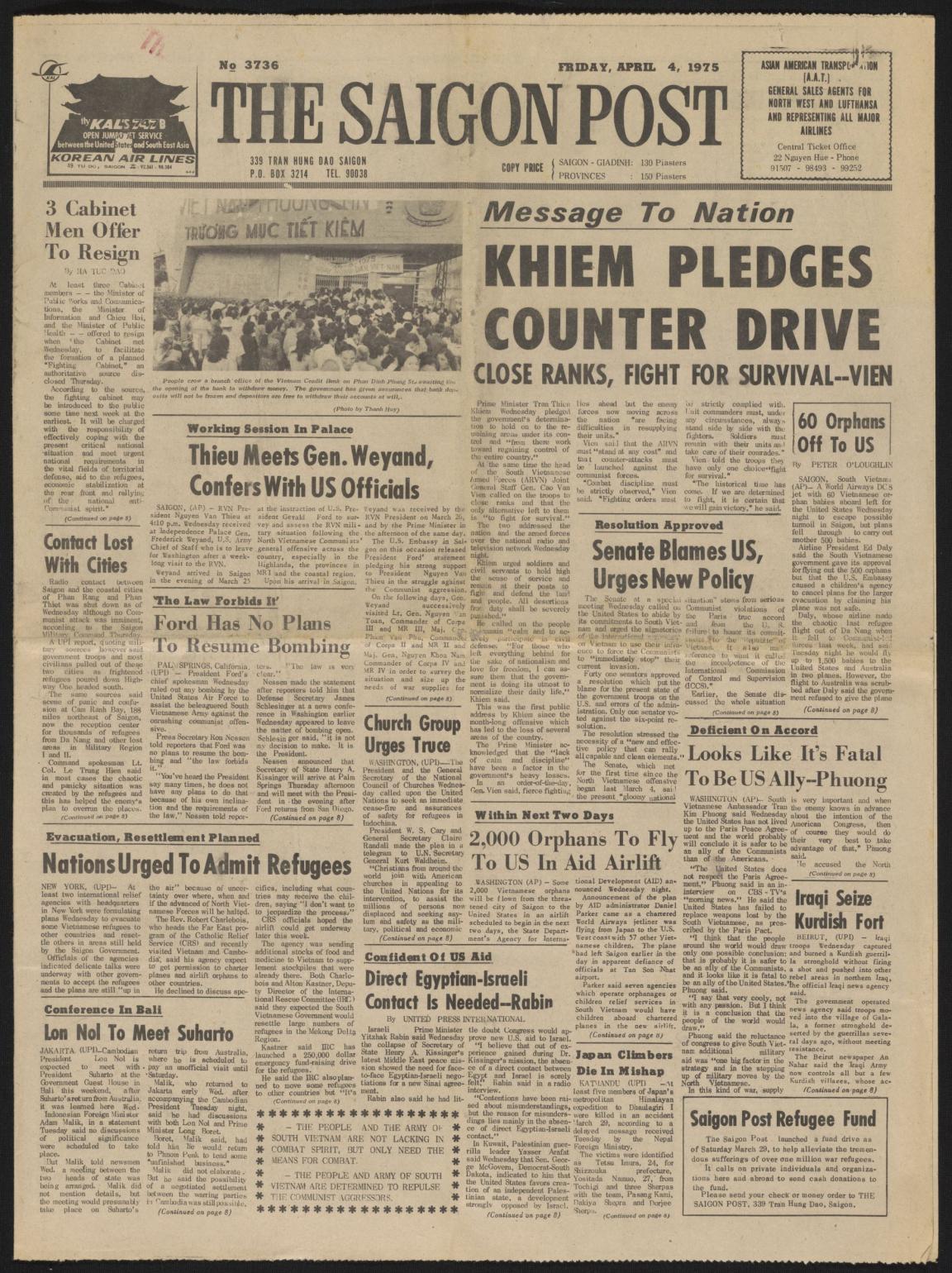Elaine Moir: ‘The waif smuggler’ during the Vietnam War
By 1971 Australia had already begun to reduce its commitment to the Vietnam War and to bring back troops. That year, Melbourne secretary Elaine Moir planned an orphan airlift from Vietnam. She was dubbed ‘the waif smuggler’ by the Australian press and by 1972 had flown 5 Vietnamese orphan girls to adoptive parents in Australia. She had no entry permits and this angered the Australian Government, but public opinion and Moir’s defiance enabled the children to stay.
Moir played a significant role in further adoption flights, building up to Operation Babylift in April 1975. In this operation, 3,000 Vietnamese children were taken to countries around the world, including Australia. It was the largest act of adoption in history.
While many Westerners understood Operation Babylift as a humanitarian activity, many Vietnamese people considered it kidnapping, especially because some children were not orphans and had been placed in orphanages on the understanding that their stay would be temporary.
In 2011, Moir donated to the Library 5 archival boxes of material documenting her role in getting Vietnamese children adopted in Australia. This includes a scrapbook where Moir kept copies of Australian newspaper articles reporting on Operation Babylift. This scrapbook is displayed in our current exhibition, 1975: Living in the Seventies.

Two covers of The Sun-Herald newspaper from Sunday 6 April 1975 on display in the 1975: Living in the Seventies exhibition.
Two covers of The Sun-Herald newspaper from Sunday 6 April 1975 on display in the 1975: Living in the Seventies exhibition.
The Vietnam War
The Vietnam War started in 1955 and was an armed conflict fought between North Vietnam and South Vietnam and their respective allies. It was a major proxy war in which both the Soviet Union and China supported North Vietnam, while the United States and its non-Communist allies like Australia supported South Vietnam. The fighting spilled over into the Laotian and Cambodian Civil Wars which ended with all 3 countries becoming Communist in 1975. Children from Cambodia and Laos were also taken to Western countries for adoption due to this conflict.
Elaine Moir
During the 1960s, Moir worked in Saigon as a photojournalist for Everybody’s magazine which advertised her as ‘our girl in the war zone’. She saw Saigon’s orphanages and the children in them, many of whom had been fathered by Australian and American soldiers. In 1972, after she had gotten the 5 Vietnamese girls to Australia, she told the Women’s Weekly:
I didn't want to embarrass the Australian government. I didn't consider I was breaking the law. I am a law-abiding person but I had no alternative. I wanted to get the children to Australia, to be able to say, 'Here they are, do something!'
Operation Babylift
In April 1975, when Saigon was close to falling, the Royal Australian Air Force flew Australian citizens and foreign nationals out of Vietnam. This included working with the Americans as part of Operation Babylift. Moir kept the Saigon Post newspaper from 4 April 1975 and wrote a note saying that it was ‘the day we left Saigon on Babylift’.

Front page of The Saigon Post from 4 April 1975, Saigon: Bùi Diễm, Papers of Elaine Moir, nla.cat-vn6159065.
Front page of The Saigon Post from 4 April 1975, Saigon: Bùi Diễm, Papers of Elaine Moir, nla.cat-vn6159065.
The first Babylift flight, an RAAF C-130 carrying 87 babies, landed safely in Bangkok. The next plane bound for the United States, a C-5A Galaxy, had 330 passengers including orphans, aircrew, doctors and nurses. It crashed 12 minutes after take-off, killing 154 babies and volunteers, including 2 Australians: Margaret Moses and Lee Makk.
The third flight to leave Saigon that day was an RAAF Hercules A97-190 carrying 107 babies. It arrived in Bangkok safely, before continuing on to Australia on a QANTAS 747. A fourth Operation Babylift flight left on 17 April, carrying 77 children to Bangkok, before they too were taken to Australia on a QANTAS 747.
The children transported from Vietnam as well as Cambodia and Laos in the 1970s were given to Australian families that were already approved for overseas adoptions.
After the war
Moir slipped from public view after the 1970s, though she continued to campaign for Vietnamese children impacted by the war and the continuing effects of the chemicals used during the conflict.